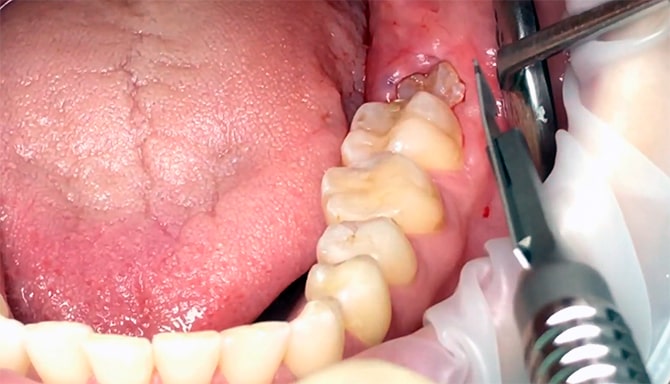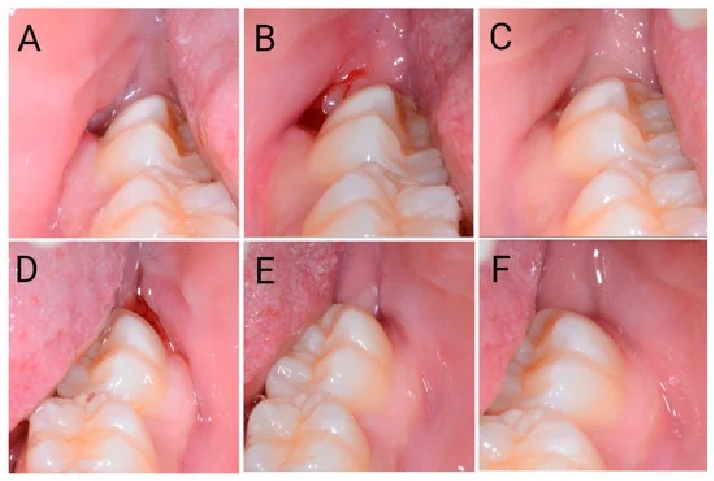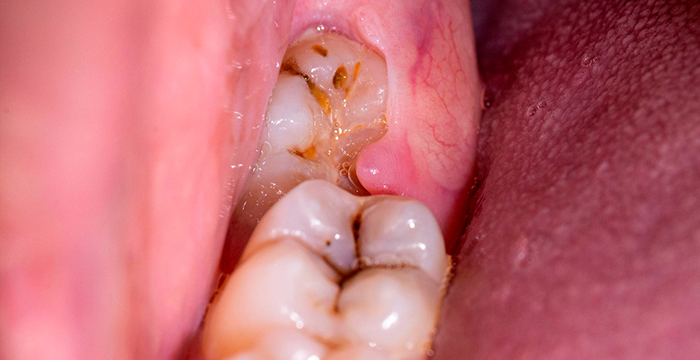Throwing up after wisdom teeth

Throwing Up After Wisdom Teeth Removal: Causes, Prevention, and Recovery
Wisdom teeth removal is a common dental procedure that many people undergo during their late teens or early twenties. While the process itself is straightforward, the recovery can sometimes be accompanied by a few unpleasant side effects. One such issue that patients might experience is throwing up after wisdom teeth removal. This symptom can be concerning, especially when you’re already dealing with the discomfort of surgery.
In this comprehensive guide, we’ll explore why throwing up after wisdom teeth removal might occur, how to prevent it, and what to do if it happens. Whether you’re preparing for wisdom teeth surgery or are already in recovery, understanding this potential side effect can help you manage your recovery process more effectively.
Understanding Wisdom Teeth Removal
1. What Are Wisdom Teeth?
Wisdom teeth, also known as third molars, are the last set of molars that typically emerge during late adolescence or early adulthood. Unlike other teeth, wisdom teeth often cause problems due to a lack of space in the mouth. As a result, they can become impacted, meaning they don’t fully emerge or grow in the wrong direction, which can lead to pain, infection, and other dental issues.
2. Why Is Wisdom Teeth Removal Necessary?
Wisdom teeth removal is a common procedure recommended by dentists when these teeth cause problems or are likely to cause problems in the future. Common reasons for wisdom teeth removal include:
- Impaction: When the tooth is trapped in the gum or jawbone and cannot emerge properly.
- Crowding: Lack of space in the mouth, leading to misalignment of other teeth.
- Infection: Partially erupted teeth can be difficult to clean, leading to gum infections.
- Cysts or Tumors: Rarely, wisdom teeth can cause cysts or tumors that damage the jawbone and surrounding tissues.
3. The Procedure
Wisdom teeth removal is typically performed by an oral surgeon or a dentist under local anesthesia, sedation, or general anesthesia, depending on the complexity of the extraction and the patient’s comfort level. The surgery involves making an incision in the gum to expose the tooth, removing any bone that blocks access, and then extracting the tooth. The incision is then closed with stitches, and the patient is sent home to recover.
Why Might You Experience Throwing Up After Wisdom Teeth Removal?
Throwing up after wisdom teeth removal is not a common symptom, but it can occur due to various factors related to the surgery, anesthesia, or medications. Understanding the potential causes can help you manage and prevent this uncomfortable side effect.
1. Reaction to Anesthesia
One of the most common reasons for throwing up after wisdom teeth removal is a reaction to the anesthesia used during the procedure. Depending on the complexity of the surgery, you may receive local anesthesia, sedation, or general anesthesia. Each type of anesthesia can have different effects on your body.
General Anesthesia
- Nausea and Vomiting: General anesthesia is known to cause postoperative nausea and vomiting (PONV) in some patients. This is a common side effect, particularly in patients who have a history of motion sickness or previous reactions to anesthesia.
- Dehydration: Anesthesia can cause dehydration, which can contribute to nausea and vomiting.
Sedation
- Drowsiness and Dizziness: Sedation, especially with medications like benzodiazepines or opioids, can lead to drowsiness and dizziness, which can cause nausea.
- Reaction to Medication: Some patients may have an adverse reaction to the sedatives used, resulting in nausea and vomiting.
Local Anesthesia
- Minimal Risk: Local anesthesia has a much lower risk of causing nausea, but some patients may still experience dizziness or lightheadedness, especially if they are anxious or have low blood sugar levels.
2. Pain Medications
After wisdom teeth removal, your dentist or oral surgeon may prescribe pain medications to manage discomfort. These medications, especially opioids, can cause nausea and vomiting as a side effect.
Opioid Painkillers
- Common Side Effects: Opioid painkillers, such as hydrocodone or oxycodone, are effective at managing pain but can also cause nausea and vomiting, especially if taken on an empty stomach.
- Tolerance and Sensitivity: Some patients may be more sensitive to opioids, increasing their risk of experiencing nausea.
NSAIDs
- Less Likely: Nonsteroidal anti-inflammatory drugs (NSAIDs) like ibuprofen or naproxen are less likely to cause nausea, but they can still irritate the stomach, particularly if not taken with food.
3. Swallowed Blood
During and after wisdom teeth removal, it’s common to have some bleeding in the mouth. If you swallow blood, it can irritate the stomach and lead to nausea and vomiting.
Postoperative Bleeding
- Normal Bleeding: Some bleeding is normal after surgery, but swallowing significant amounts of blood can upset your stomach.
- Managing Bleeding: Keeping gauze in place as directed by your dentist can help minimize bleeding and reduce the likelihood of swallowing blood.
4. Stress and Anxiety
The stress and anxiety associated with dental surgery can also contribute to nausea. The body’s response to stress can trigger the release of stress hormones like adrenaline, which can upset the stomach and lead to vomiting.
Anxiety-Induced Nausea
- Pre-Surgery Anxiety: Worrying about the surgery can cause nausea even before the procedure begins.
- Post-Surgery Stress: Concerns about recovery or complications can continue to cause stress-related nausea after the procedure.
5. Dehydration and Fasting
Before undergoing wisdom teeth removal, you may be required to fast for several hours, especially if general anesthesia is used. Fasting, combined with dehydration, can lead to low blood sugar levels and an upset stomach, increasing the likelihood of nausea and vomiting after the procedure.
Fasting Guidelines
- Pre-Surgery Fasting: Follow your dentist’s or surgeon’s instructions regarding fasting to minimize the risk of nausea.
- Rehydration: Gradually rehydrate after surgery, starting with small sips of water.
How to Prevent Throwing Up After Wisdom Teeth Removal
While throwing up after wisdom teeth removal can be uncomfortable, there are steps you can take to prevent or minimize the risk. Here are some tips to help you avoid nausea and vomiting during your recovery:
1. Follow Pre-Surgery Instructions Carefully
Adhering to your dentist’s or surgeon’s pre-surgery instructions can help reduce the risk of nausea after the procedure.
Fasting and Hydration
- Fasting: If you’re required to fast before surgery, follow the instructions carefully. Eating too soon before surgery can increase the risk of nausea from anesthesia.
- Hydration: Stay hydrated leading up to the procedure, but avoid drinking large amounts of water right before surgery if you’ve been instructed to fast.
2. Manage Pain Effectively
Managing pain effectively can help reduce the risk of nausea caused by pain or pain medications.
Use Pain Medications Wisely
- Take as Prescribed: Follow your dentist’s instructions on how to take pain medications. Taking them as directed can help minimize side effects.
- Take with Food: If your pain medication can be taken with food, eat a light snack before taking it to reduce the risk of stomach upset.
Consider Alternatives
- Non-Opioid Options: If opioids cause nausea, ask your dentist about non-opioid alternatives like NSAIDs or acetaminophen.
- Gradual Weaning: If you need to take opioids, try to wean off them as soon as possible to minimize the risk of nausea.
3. Avoid Swallowing Blood
Taking steps to manage bleeding after surgery can help prevent swallowing blood and reduce the risk of nausea.
Control Bleeding
- Use Gauze: Keep gauze in place over the surgical site as directed by your dentist to control bleeding.
- Elevate Your Head: Keep your head elevated when lying down to reduce bleeding and avoid swallowing blood.
4. Minimize Stress and Anxiety
Managing stress and anxiety before and after surgery can help prevent nausea.
Relaxation Techniques
- Deep Breathing: Practice deep breathing exercises before surgery to calm your nerves and reduce anxiety.
- Guided Imagery: Visualize a calming place or situation to help reduce stress during and after surgery.
Medications
- Anti-Anxiety Medication: If you have severe anxiety, talk to your dentist about the possibility of taking anti-anxiety medication before surgery.
5. Gradual Rehydration and Diet
Rehydrating and reintroducing food gradually after surgery can help prevent nausea and vomiting.
Start with Liquids
- Clear Liquids: Start with clear liquids like water, broth, or electrolyte drinks immediately after surgery.
- Avoid Carbonated Beverages: Carbonated drinks can cause gas and bloating, which can worsen nausea.
Introduce Soft Foods
- Soft Diet: Once you’re able to tolerate liquids, gradually introduce soft foods like applesauce, yogurt, or mashed potatoes.
- Avoid Spicy or Acidic Foods: Spicy or acidic foods can irritate the stomach and increase the risk of nausea.
6. Use Anti-Nausea Medications
If you’re prone to nausea or have experienced nausea after surgery in the past, your dentist may prescribe anti-nausea medications to take before or after the procedure.
Common Anti-Nausea Medications
- Ondansetron (Zofran): A commonly prescribed medication to prevent nausea and vomiting after surgery.
- Promethazine (Phenergan): Another anti-nausea medication that may be prescribed to manage nausea.
What to Do If You Experience Throwing Up After Wisdom Teeth Removal
If you experience throwing up after wisdom teeth removal, there are steps you can take to manage the situation and ensure a smooth recovery.
1. Stay Calm and Rest
If you start feeling nauseous or begin vomiting, try to stay calm and rest. Stress can exacerbate nausea, so take deep breaths and try to relax.
2. Rehydrate Slowly
Vomiting can lead to dehydration, so it’s important to rehydrate slowly. Start by sipping small amounts of water or an electrolyte drink. Avoid gulping large amounts, as this can trigger more nausea.
3. Avoid Solid Foods Until Nausea Subsides
If you’ve been vomiting, avoid solid foods until your nausea has subsided. Stick to clear liquids or bland foods like crackers or toast once you’re ready to try eating again.
4. Use Anti-Nausea Medication
If you have anti-nausea medication on hand, take it as directed to help control your symptoms. If you weren’t prescribed medication, consult your dentist about whether it would be appropriate to take an over-the-counter option.
5. Monitor for Complications
While throwing up after wisdom teeth removal can be uncomfortable, it’s usually not a cause for concern. However, if you experience any of the following symptoms, contact your dentist or surgeon immediately:
- Persistent Vomiting: Vomiting that continues for more than 24 hours.
- Severe Pain or Swelling: Intense pain or swelling that doesn’t improve with pain medication.
- Signs of Infection: Symptoms like fever, pus, or a foul taste in your mouth may indicate an infection.
- Dehydration: Symptoms like dizziness, dark urine, or a dry mouth may indicate dehydration, which requires medical attention.
6. Follow Up with Your Dentist
After any bout of vomiting, it’s important to follow up with your dentist or oral surgeon to ensure that your recovery is on track. They may want to check the surgical site and adjust your medications if necessary.
Long-Term Recovery After Wisdom Teeth Removal
Once the initial recovery period is over, it’s important to continue taking care of your mouth to ensure full healing and prevent any further complications. Here are some tips for long-term recovery:
1. Continue with Soft Foods
Stick to a soft food diet for as long as your dentist recommends. Gradually reintroduce more solid foods as your mouth heals, but avoid anything hard, crunchy, or sticky that could disrupt the healing process.
2. Maintain Oral Hygiene
Keeping your mouth clean is crucial for preventing infection and promoting healing. Brush your teeth gently, avoiding the surgical site, and rinse your mouth with warm salt water several times a day.
3. Avoid Strenuous Activity
Physical activity can increase blood pressure and lead to more bleeding at the surgical site. Avoid strenuous exercise or heavy lifting for at least a week after surgery.
4. Attend Follow-Up Appointments
Your dentist will likely schedule a follow-up appointment to check your healing progress. Attend this appointment to ensure that your recovery is going as planned and to address any concerns you may have.
5. Watch for Signs of Dry Socket
Dry socket is a painful condition that can occur if the blood clot at the surgical site is dislodged. Symptoms include severe pain, bad breath, and an unpleasant taste in the mouth. If you suspect you have dry socket, contact your dentist immediately.
Conclusion: Managing Throwing Up After Wisdom Teeth Removal
Throwing up after wisdom teeth removal is an unpleasant but manageable side effect that some patients may experience. Understanding the potential causes, such as reactions to anesthesia, pain medications, swallowed blood, or stress, can help you take preventive measures and manage the situation if it occurs.
By following your dentist’s pre- and post-surgery instructions, managing pain effectively, and taking steps to prevent dehydration and nausea, you can reduce the likelihood of experiencing vomiting after wisdom teeth removal. If you do experience nausea or vomiting, staying calm, rehydrating slowly, and monitoring for any complications will help ensure a smooth recovery.
Remember, every patient’s recovery is different, so it’s important to communicate openly with your dentist or oral surgeon about any concerns you have during the healing process. With the right care and attention, you can navigate the recovery period and get back to feeling your best in no time.









